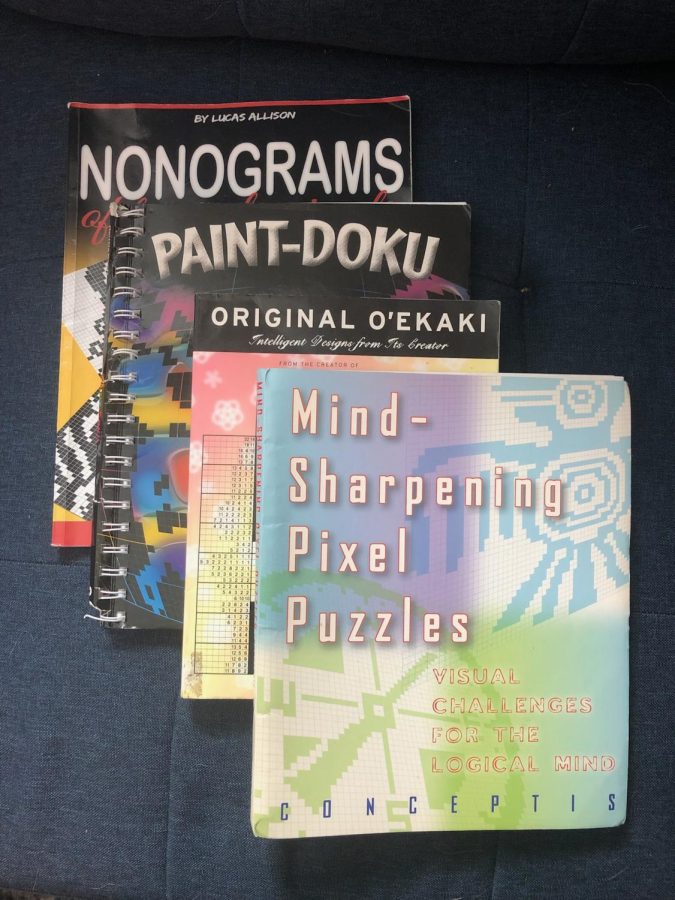Nonograms: A Game of Logic
Why You Should Play Nonograms
In this ever growing world there is a vastness of knowledge and entertainment, and many people who find enjoyment in games of logic and deliberation. Sudoku, minesweeper, solitaire, dot-to-dots, all these games are widespread, and known throughout the world and enjoyed by millions. They can come in many renditions, especially sudoku, with versions like wordoku and samurai sudoku. These are very common and well loved, but have you ever completed a nonogram?
What is a nonogram, you might ask? Well, a nonogram is a logic puzzle that has many names—they are called nonograms, griddlers, picross, paint by numbers, Oekaki, and Hanjie. Nonogram puzzles are played through use of number clues around the sides of a grid to color in boxes, which, once solved, reveals a picture.
These nonogram puzzles first appeared in 1988 in Japan, being three picture grid puzzles published by Non Ishida under the name if “Window Art Puzzles.” They gained the name Nonograms in 1990, Name made by James Dalgety of the UK and inspired by the name of the creator, Non.
You may be wondering now, how do I play a nonogram? Well, that is a simple task in itself when you know what you are doing, but it becomes hard if you are just placed into it without any previous knowledge. We’ll just focus on black and white nonograms here, as they are largely easier than color nonograms. Remember, you can always delve deeper into them if you wish to later.
In these black and white puzzles, the numbers shown in rows or columns represent blocks of black in said row or column.
You see this? This is a nonogram puzzle to show you the basics.
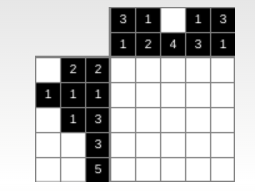
Looking at the puzzle, the first thing you should do is look at the size of the grid. Count the squares. Nonograms that are above 5×5 are usually divided by 5×5 grids, so a 25×25 puzzle would look like this:
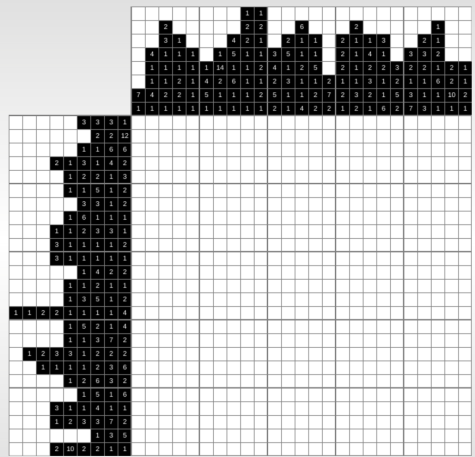
Learning the size of a nonogram is made easy due to this common practice, as you can count by fives to get the length and width of your puzzle. Some puzzles do not stick to the 5×5 rule, like a 12×12 grid, or a 14×15 grid. They don’t have to be squares either—there are quite a few rectangular nonograms as well. You can still count squares, but be aware of any shortages in the boxes. Don’t assume that every nonogram is a square unless explicitly told so. Keep these measurements in mind, as they are important.
Back to the solving!

This nonogram is a 5×5 nonogram, and all rows have some sort of number within them. Let’s start with some of the guaranteed rows. These rows are ones that will span the whole length of the nonogram, like a row of 25 in a 25×25 nonogram or, like in this one a row of 5 in a 5×5 nonogram.
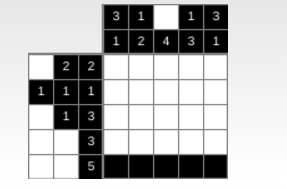
Next is another type of guaranteed row, but it may take more brainpower to notice it. These rows are ones that, when placed, fill up the nonogram with the numbers and the spaces between them. The middle row on the side is a good example—if you put the first number in, add a buffer, and then put the second, the row is full. The same goes with the other 1-3 rows, but lets ignore that for the time being.

Now, let’s look at the row second from the bottom. This row has no clear guidelines for its exact position yet that we have placed. We do not know if it will go from the right, or from the left. What we do know, however, is that whatever we do with it, it will have at least one filled square in the middle of the grid.
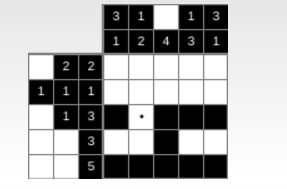
That’s easy enough, right? From there we can fill it in using the clues we have. This puzzle has a lot of automatically guaranteed rows—the 1-1-1 row, the four 1-3 rows, and the 5 row. Let’s fill those in!
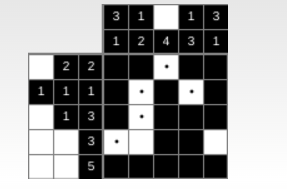
Look at that! We have one more space, and the numbers go along with it. Let’s fill that space in.
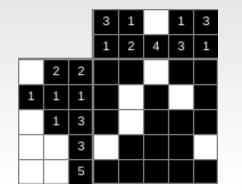
There it is. A completed nonogram. It’s simple, no?
Well—not always. There is always more to it. That one was a very simple nonogram. The larger the nonogram, the more confusing it will get. I suggest starting small: 5×5 or 10×10. When you get comfortable with nonograms, you can start to move up to harder puzzles, and enjoy the challenge and the thrill that comes with the completion of these puzzles.
Sometimes you may not be able to solve a nonogram. It may be disappointing, but that is just life. You will improve, you will learn, and you will overcome. Nonograms are truly an exercise in patience and a test of your logic, and could help you improve these qualities. Keep it up, keep going, keep doing. You’ll reach a point where you look back and see your progress one day and truly appreciate what you are capable of.
Further research and sources on above topic:
An easy how-to on nonograms: https://kids.kiddle.co/Nonogram
How to solve nonograms:
https://www.puzzlemuseum.com/griddler/gridins.htm
https://delightfulpaths.com/tag/nonograms
Some tips, tricks, and history: https://wp.wwu.edu/ratherpuzzling/2016/10/31/32/
Your donation will support the student journalists of Brunswick High School. Your contribution will allow us to purchase equipment. Our goal is to purchase some updated and much needed cameras for the program.



































